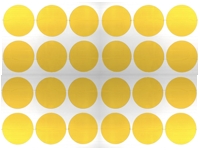|
Outline
This procedure covers one commonly used method for removing surface mount J lead components.
|
||||||||||||||||||||||||||||||||||||||
|
Procedure
Preparation
|
||||||||||||||||||||||||||||||||||||||
Images and Figures
Component Removal, Surface Mount J Lead Components, Hot Gas Method

Figure 1. Nozzle at left heats the leads and pads. Nozzle at right heats component, leads and pads.

Figure 2. After solder has melted lift component straight up.
|
||||||||||||||||||||||||||||||||||||||
8.3.2 Component Removal, Surface Mount J Lead Components, Hot Gas Method
Procedure covers removal of surface mount J lead components on circuit board assemblies using a hot gas method.
Minimum Skill Level: Advanced
Conformance Level: High
REQUEST FOR QUOTE GUIDES INDEX

Component Removal, Surface Mount J Lead Components, Hot Gas Method

Nozzle at left heats the leads and pads. Nozzle at right heats component, leads and pads.

After solder has melted lift component straight up.

Do you need help with surface mount and through-hole component rework or salvage?
LEARN MORE
SLIDESHOW STARTING
❮
❯














